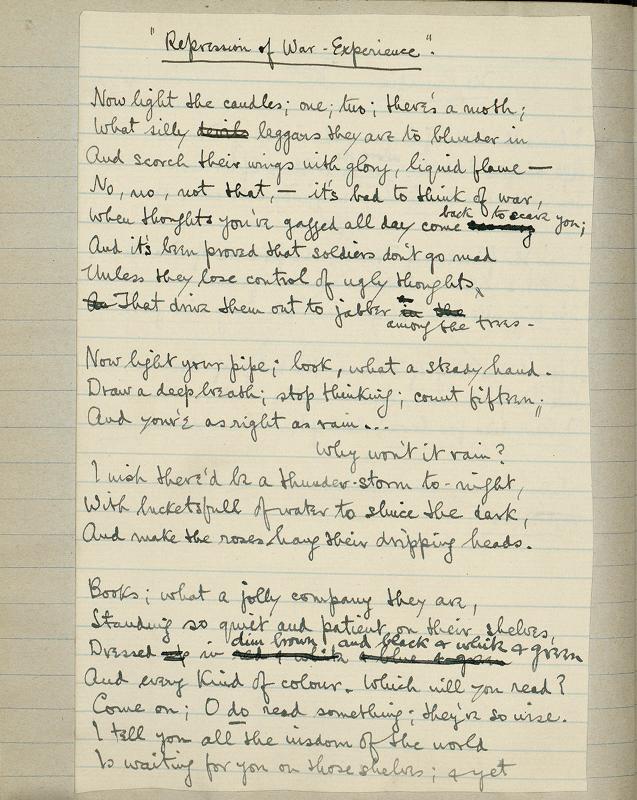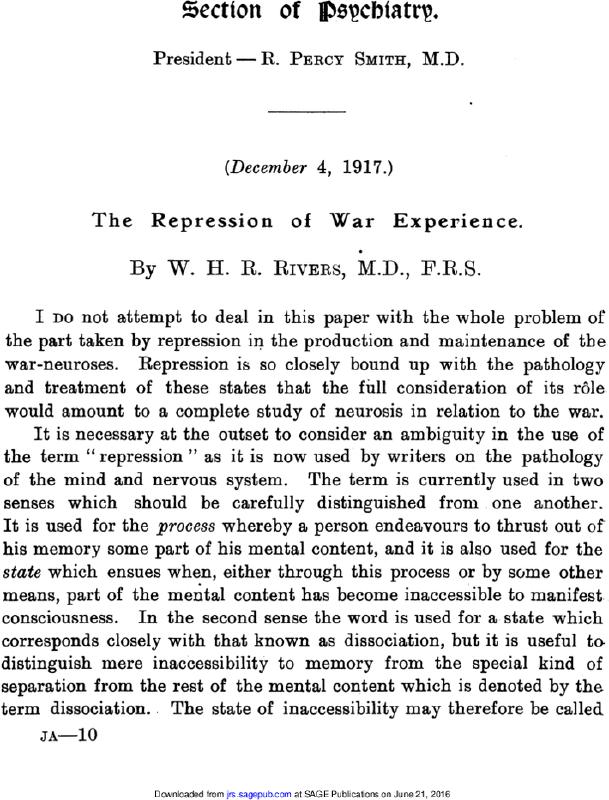Siegfried Sassoon, Poet and Conscientious Objector
War poet Siegfried Sassoon served as a second lieutenant in the Royal Welsh Fusiliers. His letter to his commanding officer, “Finished with the War: A Soldier’s Declaration,” was published in Bradford Pioneer on July 27, 1917, and was read out to the House of Commons the following day. In his public letter Sassoon asserts, “I believe that this war upon which I entered as a war of defence and liberation has now become a war of aggression and conquest.” Sassoon was in danger of court-martial after publishing his statement, due to his public stance against the war. Sassoon’s fellow war poet and friend, Robert Graves, arranged for the War Office to convene and to diagnose Sassoon with shell-shock: he was sent to recover at Craiglockhart hospital, where he met fellow officer and poet Wilfred Owen.
In his poem "Repression of War Experience," Sassoon uses a metaphor of moths, who "blunder in," only to "scorch their wings with glory, liquid flame," like soldiers who believed that they would prove themselves heroes through war. Like these moths, these men do not escape unscathed, but "go stark, staring mad because of the guns." Sassoon also depicts a common belief held by psychologists of the era: "And it's been proved that soldiers don't go mad / Unless they lose control of ugly thoughts."
One such man who believed this hypothesis was W.H.R. Rivers, who treated Sassoon for his shell-shock at Craiglockhart Hospital. In the summer of 1917, Rivers delivered a talk to the Royal Society of Medicine, titled "The Repression of War Experience." Rivers argued that shell-shock was the result of rapid training which did not allow soldiers to accumulate repression of battle trauma which would later become shell-shock. Rivers believed in Sigmund Freud's repression hypothesis of trauma, where negative thoughts are pushed to the back of the unconscious mind.
In his similarly named poem "Repression of War Experience," Sassoon translates this psychological theory into his depiction of shell-shock, which turns men into illogical creatures, like moths who fly towards the very fire which kills them, their ugly thoughts of war, "that drive them out to jabber among the trees."

